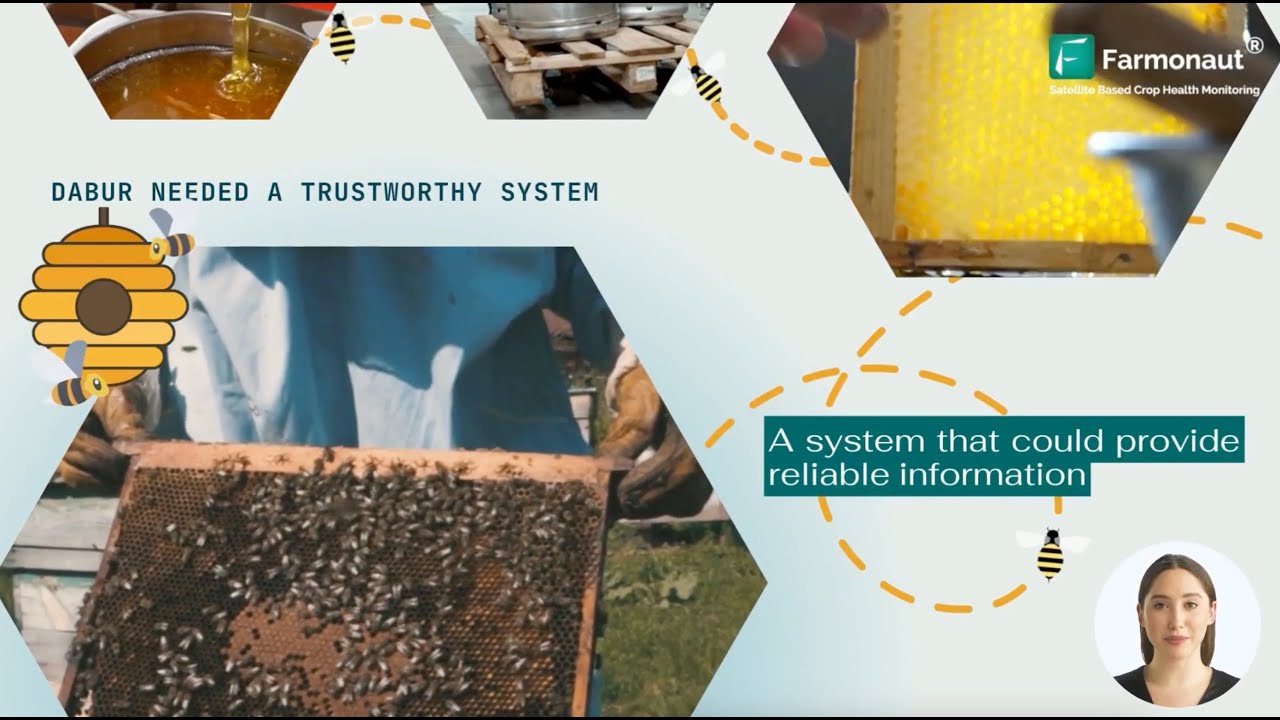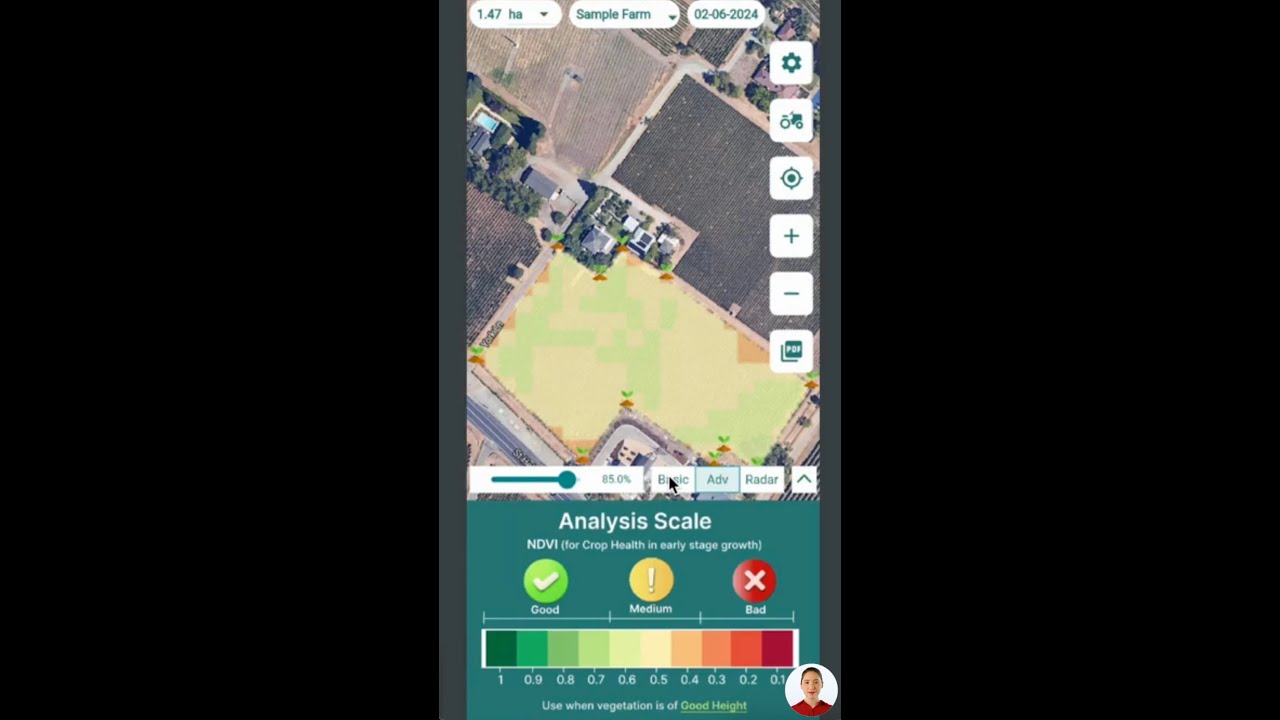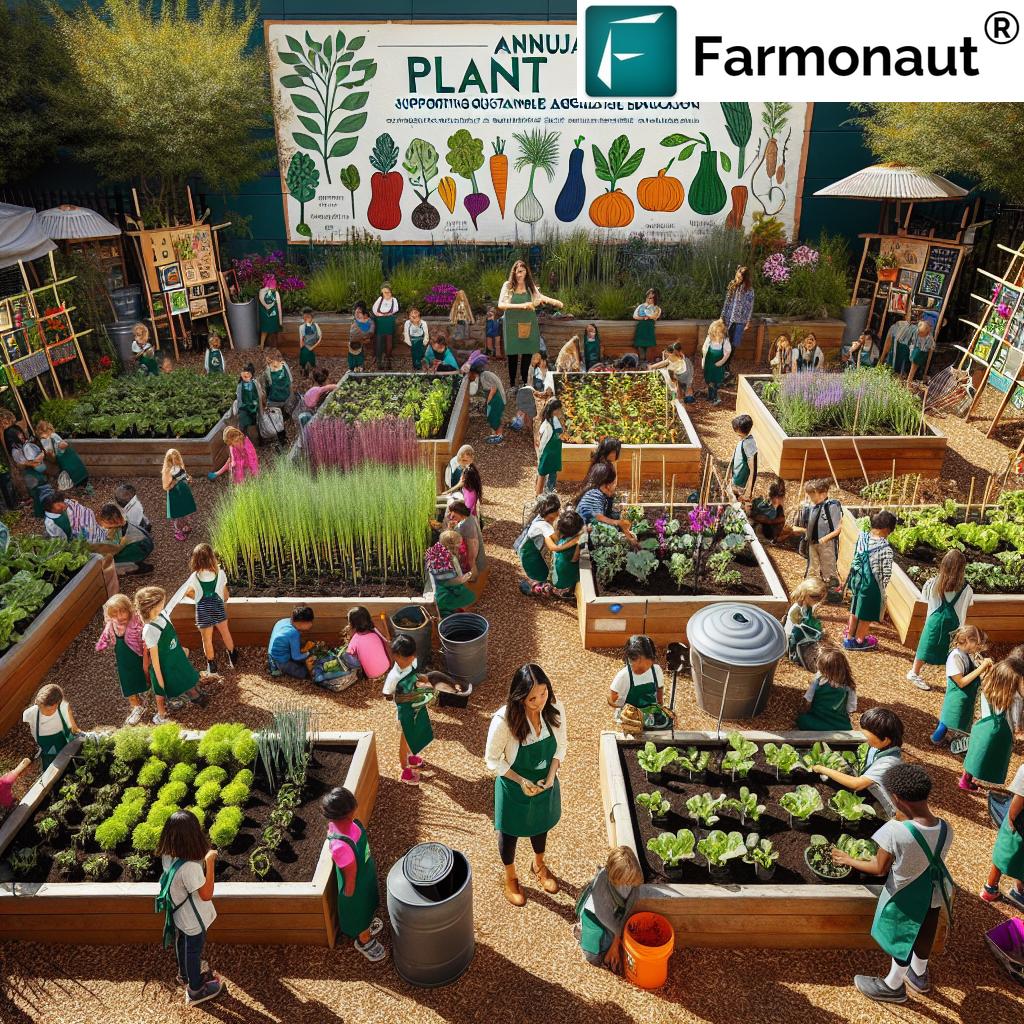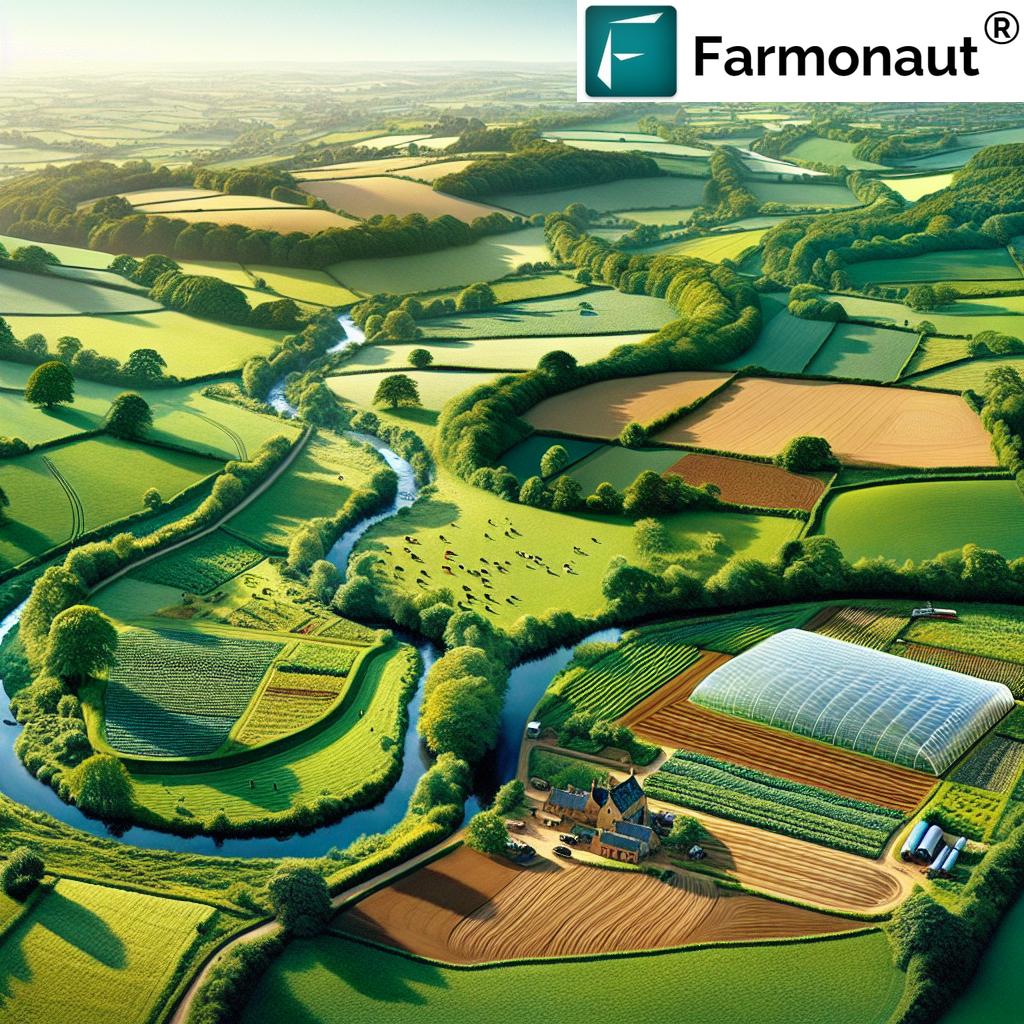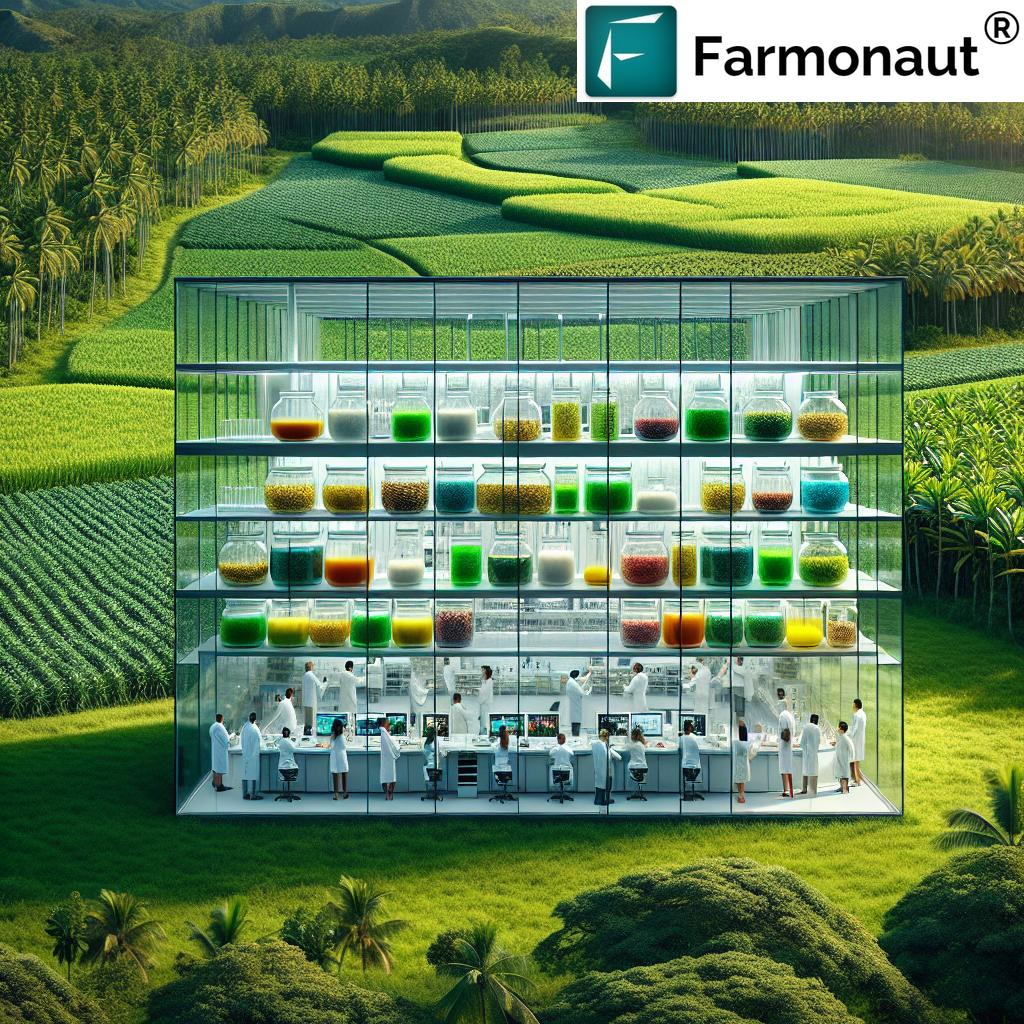Honeybee Decline Threatens Grand Junction’s Fruit Crops: Sustainable Solutions for Local Agriculture
“Commercial honeybee colonies are projected to decrease by 60-70% by 2025, threatening billion-dollar crop yields.”
In the heart of Colorado’s Western Slope, Grand Junction’s agricultural landscape faces a looming challenge that could reshape the future of its fruit industry. As we delve into the complex world of honeybees and their critical role in our local ecosystem, we find ourselves at a crossroads where the buzz of these tiny pollinators intersects with the prosperity of our orchards and fields.
A recent study from Washington State University has sent ripples through the agricultural community, projecting a staggering 60-70% decline in commercial honeybee colonies by 2025. This forecast has raised alarm bells for farmers and environmentalists alike, prompting us to examine the potential impact on Grand Junction’s beloved fruit crops and explore sustainable solutions to safeguard our agricultural heritage.
The Buzz About Honeybees: Understanding the Decline
Honeybees are more than just producers of sweet, golden honey; they are the unsung heroes of our food system. These industrious insects play a pivotal role in pollinating a vast array of crops, including many of the fruits that have put Grand Junction on the map. The honeybee decline impact on agriculture is a complex issue with far-reaching consequences that we must address head-on.
Several factors contribute to the decline of honeybee populations:
- Pesticide use
- Habitat loss
- Climate change
- Parasites and diseases
- Monoculture farming practices
Each of these factors poses a significant threat to honeybee health and survival, creating a perfect storm that has led to the phenomenon known as Colony Collapse Disorder (CCD). This mysterious occurrence, where entire colonies of bees disappear, leaving behind only the queen and a few attendants, has puzzled scientists and beekeepers alike.

The Grand Junction Perspective: Local Farmers Weigh In
While the national outlook appears grim, some local farmers in Grand Junction remain cautiously optimistic. Bruce Talbott, farm manager of Talbott’s in Palisade, shared his perspective: “Locally we are not worried, nationally, bees are very important to a lot of the crops we grow. When they’re most needed, we have plenty of bees. If we needed them in the middle of February, we couldn’t get bees.”
This local confidence is reassuring, but it’s essential to understand that the interconnectedness of our agricultural systems means that what affects one region can ultimately impact another. The crop pollination importance cannot be overstated, especially for the diverse fruit crops that thrive in our area.
The Fruit Basket of Colorado: Crops at Risk
Grand Junction and the surrounding areas are renowned for their fruit production, particularly in Palisade, where the unique microclimate and rich soil create ideal conditions for growing a variety of fruits. However, not all crops are created equal when it comes to pollination needs. Let’s break down the potential impact on some of our key crops:
| Fruit Crop | Pollination Requirement | Estimated Yield Impact | Alternative Pollination Methods |
|---|---|---|---|
| Peaches | Self-pollinating | Minimal (0-5%) | Natural wind pollination |
| Cherries | Insect-dependent | Significant (40-60%) | Hand pollination, Mason bees |
| Plums | Insect-dependent | Moderate (30-50%) | Mechanical pollination, Bumble bees |
| Apples | Insect-dependent | Substantial (50-70%) | Orchard mason bees, Pollen sprays |
| Pears | Insect-dependent | High (60-80%) | Artificial pollination, Hover flies |
As we can see from this table, while peaches may weather the storm of declining bee populations, other beloved fruits face a more uncertain future. The potential yield impacts are not just numbers on a page; they represent the livelihoods of our local farmers and the economic backbone of our community.
The Peach Paradox: A Silver Lining?
“Peaches, being self-pollinating, may escape the impact of honeybee decline, unlike cherries, plums, apples, and pears.”
Palisade’s crown jewel, the peach, offers a glimmer of hope in the face of honeybee decline. As a self-pollinating crop, peaches do not rely heavily on insect pollinators to produce fruit. This characteristic may shield the peach industry from the immediate effects of honeybee loss. However, it’s crucial to recognize that a diverse agricultural ecosystem is more resilient, and the loss of pollinators could have unforeseen consequences even for self-pollinating crops.
Beyond Peaches: The Ripple Effect on Other Fruits
While peaches may stand firm, other fruits grown in Grand Junction are not as fortunate. Talbott’s assessment is sobering: “If we didn’t have honeybees we would have very poor cherry set, plum set and apple and pear set.” This statement underscores the critical nature of honeybees in our local fruit tree pollination processes.
Let’s explore the potential impacts on these crops:
- Cherries: These delicate fruits rely heavily on honeybee pollination. A significant decline in bee populations could lead to reduced yields and smaller fruit size.
- Plums: While some plum varieties can self-pollinate, most benefit from cross-pollination facilitated by bees. Fewer bees could result in inconsistent fruit set.
- Apples: Apple trees require cross-pollination from different varieties, a process in which honeybees excel. Without adequate pollination, apple yields could drop dramatically.
- Pears: Similar to apples, pears depend on cross-pollination. The loss of honeybees could lead to misshapen fruit and reduced harvests.
The Economic Equation: Bees and Billion-Dollar Yields
The importance of honeybees extends far beyond the orchard rows. Dan Bean, director of Palisade Insectary, puts it into perspective: “Palisade is an agriculture town and so honeybees are critical for a lot of our crops, they result in the pollination of literally billion dollars’ worth of crops a year.”
This staggering figure highlights the economic stakes at play. The local agriculture and bees relationship is not just about preserving tradition; it’s about maintaining a vital economic engine that drives our community forward.
Commercial Beekeeping: Challenges and Adaptations
The projected decline in commercial honeybee colonies presents significant commercial beekeeping challenges. Beekeepers are the unsung heroes of our agricultural system, managing hives that pollinate crops across the country. The issues they face are multifaceted:
- Increased colony losses due to pests and diseases
- Rising costs of hive maintenance and treatment
- Difficulties in queen bee breeding and genetic diversity
- Navigating changing regulations on pesticide use
- Adapting to unpredictable weather patterns due to climate change
To address these challenges, commercial beekeepers are exploring innovative solutions:
- Implementing integrated pest management strategies
- Diversifying their operations to include queen rearing and nuc production
- Collaborating with researchers to develop more resilient bee strains
- Advocating for pollinator-friendly policies at local and national levels
Orchard Pollination Strategies: Adapting to Change
As the honeybee population faces uncertainty, orchardists in Grand Junction are reconsidering their orchard pollination strategies. Traditional methods of relying solely on honeybees may need to evolve. Here are some approaches that local farmers are exploring:
- Diversifying Pollinators: Introducing other bee species, such as mason bees and bumblebees, which can be effective pollinators for certain crops.
- Habitat Creation: Planting pollinator-friendly flowers and creating nesting sites to support wild bee populations.
- Precision Pollination: Using technology to target specific areas of orchards that require pollination, maximizing the efficiency of available bees.
- Mechanical Pollination: Exploring the use of pollen applicators and other mechanical means to supplement insect pollination.
These strategies not only address the immediate concern of honeybee colony collapse but also contribute to creating a more resilient and diverse pollinator ecosystem in our orchards.
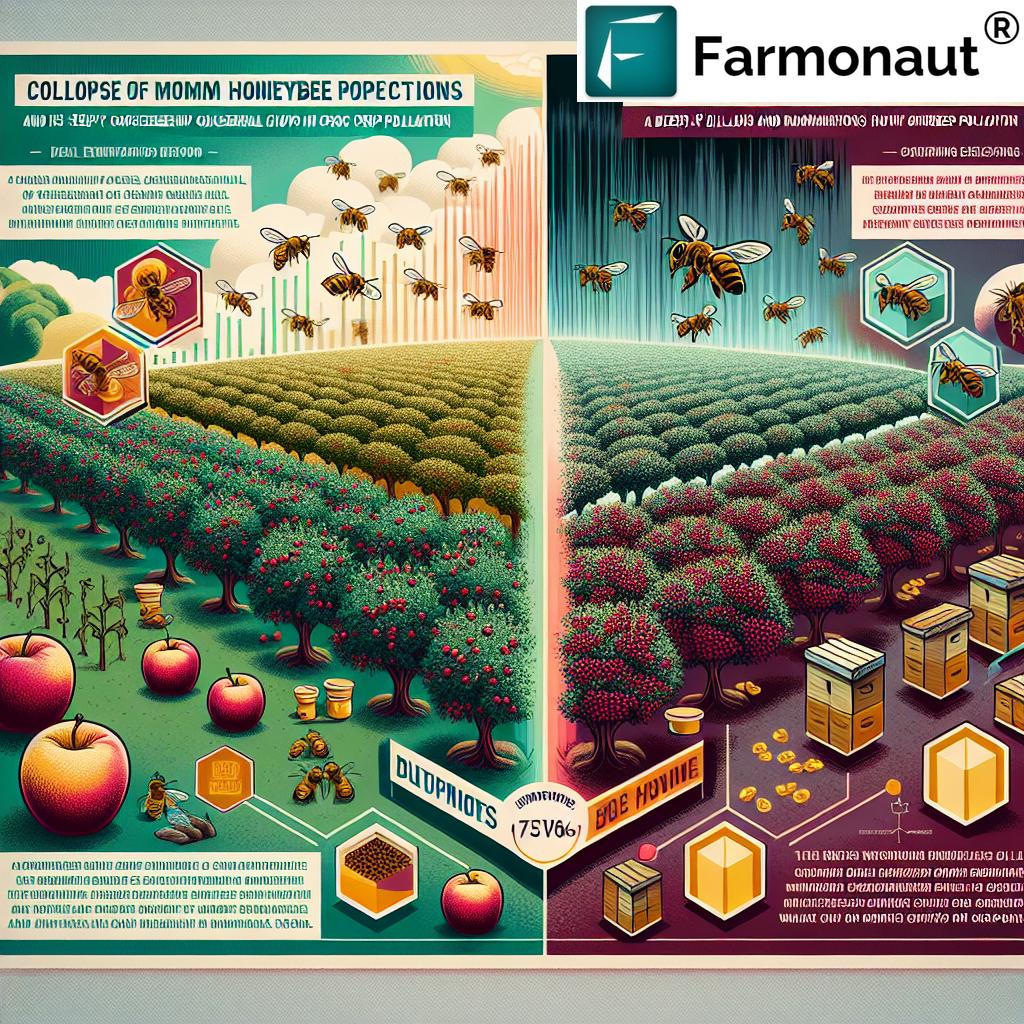
Sustainable Beekeeping: A Path Forward
The key to ensuring the future of our fruit crops lies in promoting sustainable beekeeping practices. These practices not only benefit honeybees but also support the broader ecosystem and long-term agricultural viability. Some sustainable approaches include:
- Natural Beekeeping: Minimizing chemical interventions and allowing bees to build natural comb structures.
- Diverse Forage: Encouraging the planting of diverse, bee-friendly flora to provide year-round nutrition for pollinators.
- Genetic Diversity: Supporting local queen breeding programs to develop bees adapted to our specific climate and conditions.
- Education and Outreach: Promoting beekeeping knowledge and skills within the community to foster a new generation of beekeepers.
By implementing these practices, we can work towards creating a more resilient bee population that can withstand the challenges of climate change and environmental stressors.
Technology and Innovation in Pollination
As we face the challenges of honeybee decline, technology is stepping in to offer innovative solutions. Farmonaut, a pioneering agricultural technology company, is at the forefront of this innovation. Their satellite-based farm management solutions provide valuable insights that can help farmers adapt to changing pollination needs.
Some technological advancements that could aid in addressing pollination challenges include:
- Remote Sensing: Using satellite imagery to monitor crop health and pollination patterns across large areas.
- AI-Powered Forecasting: Predicting optimal pollination times based on weather data and crop cycles.
- Precision Agriculture: Targeting resources to areas of orchards that need the most pollination support.
- Drone Technology: Exploring the potential of drones for mechanical pollination in hard-to-reach areas.
These technological solutions, combined with traditional beekeeping practices, offer a comprehensive approach to ensuring continued crop pollination in the face of honeybee decline.
Community Initiatives: Rallying Around the Bees
The challenge of honeybee decline is not just a farmer’s problem—it’s a community issue that requires collective action. Grand Junction and the surrounding areas have the opportunity to become leaders in pollinator conservation through various community initiatives:
- Urban Beekeeping Programs: Encouraging city dwellers to keep bees in backyards and on rooftops.
- Pollinator Gardens: Creating public spaces filled with bee-friendly plants to support urban pollinator populations.
- Educational Workshops: Offering classes on beekeeping, gardening for pollinators, and the importance of bees in our ecosystem.
- Bee-Friendly Policies: Advocating for local regulations that protect pollinators and support sustainable agricultural practices.
By engaging the entire community in these efforts, we can create a more hospitable environment for bees and other pollinators, ensuring the continued success of our agricultural sector.
The Role of Technology in Sustainable Agriculture
In the face of challenges like honeybee decline, technology plays a crucial role in developing sustainable agricultural practices. Farmonaut’s platform offers innovative solutions that can help farmers adapt to changing conditions and optimize their crop management strategies.
Key features of Farmonaut’s technology that can benefit local agriculture include:
- Satellite-Based Crop Health Monitoring: Farmers can track vegetation health and soil moisture levels, helping them make informed decisions about irrigation and resource allocation.
- AI Advisory System: Real-time insights and personalized crop management strategies can help farmers adapt to the challenges posed by pollinator decline.
- Blockchain-Based Traceability: Ensuring transparency in the supply chain, which is particularly important for crops that may be affected by pollination issues.
- Carbon Footprinting: Helping agribusinesses monitor and reduce their environmental impact, which is crucial for maintaining a healthy ecosystem for pollinators.
By leveraging these technological tools, farmers in Grand Junction can enhance their resilience to environmental challenges and maintain productive orchards even in the face of honeybee decline.
Economic Implications and Financial Solutions
The potential loss of honeybees could have significant economic repercussions for Grand Junction’s agricultural sector. To mitigate these risks, financial institutions are stepping up to provide support. Crop loan and insurance programs are evolving to address the unique challenges posed by pollinator decline.
Some financial strategies that can help farmers include:
- Specialized crop insurance policies that account for pollination risks
- Low-interest loans for implementing pollinator-friendly farming practices
- Grants for research into alternative pollination methods
- Financial incentives for maintaining bee-friendly habitats on farmland
These financial tools can provide a safety net for farmers as they navigate the uncertainties of changing pollination dynamics.
Looking to the Future: A Call to Action
As we face the prospect of honeybee decline, it’s clear that the future of Grand Junction’s fruit crops depends on our collective action. Here’s what we can do to ensure a thriving agricultural future:
- Support Local Beekeepers: Purchase local honey and bee products to sustain our beekeeping community.
- Plant Pollinator-Friendly Gardens: Even small spaces can make a big difference in supporting bee populations.
- Advocate for Bee-Friendly Policies: Engage with local government to promote pollinator protection measures.
- Educate and Spread Awareness: Share knowledge about the importance of bees and sustainable agriculture practices.
- Embrace Technology: Utilize innovative solutions like those offered by Farmonaut to optimize farming practices and support pollinator health.
By taking these steps, we can work towards a future where Grand Junction’s orchards continue to thrive, supported by a healthy and robust pollinator population.
Conclusion: A Buzzing Future for Grand Junction
The potential decline in honeybee populations presents a significant challenge to Grand Junction’s agricultural community. However, it also offers an opportunity for innovation, collaboration, and sustainable growth. By embracing a combination of traditional wisdom and cutting-edge technology, we can create a resilient agricultural system that supports both our economy and our ecosystem.
As we move forward, let’s remember that every action counts. Whether you’re a farmer implementing new pollination strategies, a tech-savvy entrepreneur developing pollinator-friendly solutions, or a community member planting bee-friendly flowers in your backyard, you’re contributing to the future of our local agriculture.
Together, we can ensure that Grand Junction remains a thriving fruit-growing region, buzzing with the sound of healthy bees and blossoming with the promise of abundant harvests for generations to come.
FAQ Section
- Q: How serious is the honeybee decline in Grand Junction?
A: While local farmers are currently optimistic, the projected 60-70% decline in commercial honeybee colonies by 2025 could significantly impact our fruit crops, especially those that rely heavily on insect pollination. - Q: Which fruit crops in Grand Junction are most at risk from honeybee decline?
A: Cherries, plums, apples, and pears are most at risk as they heavily depend on insect pollination. Peaches, being self-pollinating, are less affected. - Q: What can local residents do to help support honeybee populations?
A: Residents can plant pollinator-friendly gardens, support local beekeepers by purchasing local honey, avoid using pesticides, and participate in community education programs about bee conservation. - Q: Are there alternative pollinators that can help if honeybee populations decline?
A: Yes, other pollinators like mason bees, bumblebees, and even some flies can help pollinate fruit trees. However, they may not be as efficient or abundant as honeybees. - Q: How can technology help address the challenges of honeybee decline?
A: Technologies like satellite imaging, AI-powered forecasting, and precision agriculture tools can help farmers optimize their pollination strategies and monitor crop health more effectively.
Earn With Farmonaut: Affiliate Program
Earn 20% recurring commission with Farmonaut’s affiliate program by sharing your promo code and helping farmers save 10%. Onboard 10 Elite farmers monthly to earn a minimum of $148,000 annually—start now and grow your income!
Farmonaut Subscriptions


